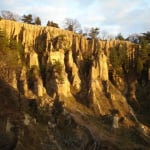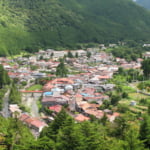Name: Wajima Koubou Nagaya
Address: 4-66-1 Kawai-machi, Wajima City, Ishikawa Prefecture, Japan
Official Website: http://ringisland.jp/nagaya/
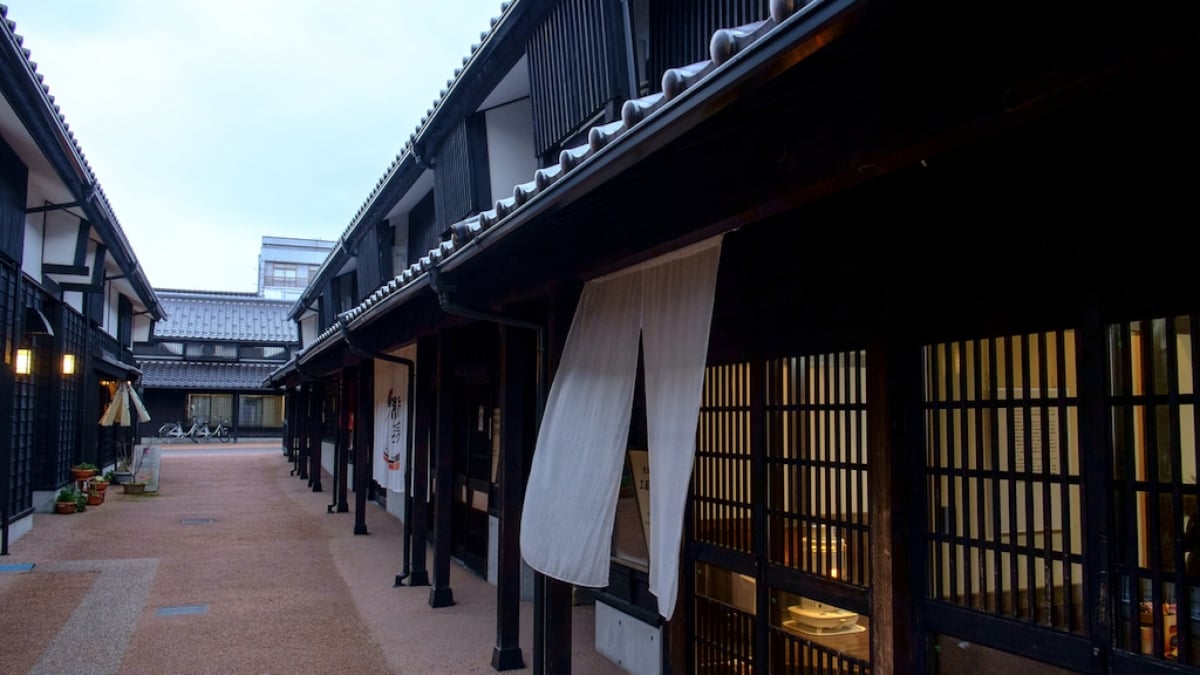
6 Must-Visit Spots to Experience Ishikawa’s Traditional Crafts
Ishikawa Prefecture is home to a wide range of unique traditional crafts, nurtured by the Maeda Clan’s patronage during the Kaga Domain era. These exquisite crafts, such as the intricate Kutani ware and elegant Kaga Yuzen dyeing, have been meticulously preserved and passed down through generations. The artistry and depth of these handcrafted traditions remain unparalleled.
In this feature, we introduce six must-visit hands-on experiences where you can immerse yourself in Ishikawa’s rich cultural heritage and create your own traditional masterpiece.
table of contents
[x] close
6 Must-Visit Spots to Experience Ishikawa’s Traditional Crafts
- 1. Wajima Koubou Nagaya: Create Your Own Wajima Lacquerware
- 2. Yoshino Craft Village: A Haven of Traditional Arts and Nature in Ishikawa
- 3. Experience Traditional Kutani Ware Pottery at Nomi Kutani Ceramics Museum
- 4. Experience Ishikawa's Traditional Crafts at Yunokuni no Mori
- 5. Experience the Beauty of Gold Leaf Crafting at Gold & Silver Leaf Craft Sakuda
- 6. For Those with a Sweet Tooth: Morihachi Kanazawa Confectionery Wood Mold Museum
- ◎ Summary
1. Wajima Koubou Nagaya: Create Your Own Wajima Lacquerware
Wajima lacquerware, known as Wajima-nuri, is a famous traditional craft produced in Wajima City, Noto Peninsula, Ishikawa Prefecture. The origins of Wajima-nuri remain uncertain, but one theory suggests that monks from Negoro-ji Temple in Kishu (modern-day Wakayama Prefecture) developed lacquerware techniques for temple furniture. After Toyotomi Hideyoshi's attack on Negoro-ji in 1585, these monks dispersed and passed down their skills in various regions, including Aizu and Wajima.
At Wajima Koubou Nagaya, visitors can observe the intricate lacquerware-making process, from wood preparation to final coating. The facility also offers a lacquerware showroom, hands-on workshops, and the chance to create your own original designs.
The experience workshop allows visitors to try traditional "Chinkin" (gold-inlay engraving) and "Maki-e" (gold and silver powder painting) techniques. You can customize your own lacquered panels or chopsticks, making this a popular activity for tourists. Enjoy an immersive cultural experience while interacting with skilled artisans.
2. Yoshino Craft Village: A Haven of Traditional Arts and Nature in Ishikawa
Located in Hakusan City, Ishikawa Prefecture, Yoshino Craft Village (Yoshino Kōgei no Sato) is surrounded by the breathtaking landscapes of the "Yoshino Ten Views," including the Tedori Gorge and Unryūzan Mountain. This artistic retreat preserves the beauty of nature while offering various hands-on experiences in traditional Japanese crafts.
Visitors can explore craft studios specializing in pottery, wood carving, Japanese paper (washi), and glass art. The Performance Plaza showcases unique artworks, while the Art & Craft Exchange Center allows guests to stay overnight and immerse themselves in creative workshops.
One of the highlights is the "Oboku-sugi" Cedar, a tree selected as one of Japan’s Top 100 Famous Trees and designated as a National Natural Monument. This location serves as an interactive hub where visitors can enjoy diverse craft activities amidst the seasonal beauty of nature.
For those interested in washi (Japanese paper), a reservation-only section lets participants experience papermaking and paper crafts, including creating custom-made lamp shades. The glass crafting corner offers hands-on activities such as blown glass experiences at 1,300°C, allowing visitors to craft original glassware. There's also a sandblasting workshop, a safe and fun glass etching activity ideal for families with children.
In the pottery section, guests can create their own unique ceramic works through hand-building, painting, or using the potter’s wheel. With various facilities including training centers, exchange salons, rest areas, and dining spaces, Yoshino Craft Village is a welcoming destination for anyone looking to enjoy Japan’s rich artistic culture.
Address: Yoshino Craft Village, 25 Yoshinoharu, Hakusan City, Ishikawa, Japan
Official Website: http://www.kougeinosato.or.jp/
3. Experience Traditional Kutani Ware Pottery at Nomi Kutani Ceramics Museum
Located in Nomi City, Ishikawa Prefecture, the Nomi Kutani Ceramics Museum is a hands-on experience spot where visitors can learn everything about Kutani ware, a traditional Japanese porcelain art. The history of Kutani ware dates back to the early Edo period when porcelain stones were discovered in Kutani, a gold-mining area at the time. Lord Toshiharu Maeda, the first daimyo of the Daishoji Domain, instructed his retainer, Saijiro Goto, to study pottery techniques in Arita, Hizen Province. This led to the establishment of the first Kutani kiln, marking the beginning of Kutani ware production.
Since then, numerous masterpieces have been created from various kilns. At the Nomi Kutani Ceramics Museum, visitors can participate in pottery workshops, where professional instructors provide step-by-step guidance, from beginner to advanced levels. In the painting workshop, guests can decorate pre-made white porcelain pieces using traditional Kutani-style pigments to create their own original designs.
For those who want a more immersive experience, the pottery-making workshop allows visitors to shape different types of ceramic ware using a potter’s wheel. It is a fantastic way to enjoy the artistry of pottery while crafting a unique piece of your own.
Whether you're looking for a fun cultural activity or an opportunity to dive into traditional Japanese craftsmanship, this experience is perfect for all ages!
Facility Name: Nomi Kutani Ceramics Museum
Address: Izumidai-machi Minami 9, Nomi City, Ishikawa Prefecture, Japan
Official Website: http://www.kutaniyaki.or.jp/about/tougeikan/index.html
4. Experience Ishikawa's Traditional Crafts at Yunokuni no Mori
Located in the southern part of Awazu Onsen, Yunokuni no Mori is a traditional craft village named after the natural hot springs of the region. This cultural spot features over 20 traditional houses, where visitors can watch skilled artisans demonstrate the intricate processes of crafting Kutani ware, Kaga Yuzen silk dyeing, gold leaf art, Wajima lacquerware, Japanese paper (washi), Yamanaka lacquerware, glassworks, and traditional sweets.
One of the highlights is the "Fisherman's House," where you can savor the rich flavors of Hokuriku cuisine, and the "Tea House," where you can immerse yourself in an authentic Japanese tea ceremony. With numerous attractions spread across a vast 130,000-tsubo (approximately 43 hectares) area, the village also features thatched-roof houses that were relocated from Ishikawa and Fukui prefectures, offering a nostalgic glimpse into Japan’s traditional countryside.
Visitors can not only observe the craftsmanship but also try their hand at 50 different craft experiences in 11 specialized workshops, including Yuzen dyeing, pottery wheel shaping, painting, and gold leaf application. The village also offers exclusive Ishikawa souvenirs and scenic dining spots, making it an ideal destination for families to enjoy a relaxing and immersive cultural experience.
Name: Yunokuni no Mori – Kaga Traditional Craft Village
Address: Na-3-3, Awazu Onsen, Komatsu City, Ishikawa Prefecture
Official Website: http://yunokuni.jp/mori/
5. Experience the Beauty of Gold Leaf Crafting at Gold & Silver Leaf Craft Sakuda
Gold leaf is created by blending gold with trace amounts of silver and copper, then hammering it into ultra-thin sheets. Historically, gold leaf production dates back to around 1200 BC in Egypt.
In Japan, it is believed that Toshiie Maeda, the first lord of the Kaga Maeda clan, ordered gold leaf production in Nanao and silver leaf production in Kanazawa. However, during the Edo period, the Tokugawa Shogunate restricted gold leaf production to only Edo (Tokyo) and Kyoto. In the Meiji era, these restrictions were lifted, and Kanazawa, which had secretly preserved traditional techniques, flourished as Japan’s leading gold leaf production center.
Originally, gold leaf was primarily used for lacquerware (金箔漆器), but today, it is applied to glassware, metal crafts, fabric, and various decorative items. This has led to a wide range of collaborative products featuring gold leaf.
At Gold & Silver Leaf Craft Sakuda, visitors can participate in an immersive gold leaf application workshop. Using a gold leaf as thin as 1/10,000 mm—so delicate that it can fly away with a single breath—you can decorate one of nine selected items, such as postcards, chopsticks, and small accessories. By applying design stickers and carefully layering the gold leaf, you’ll create a unique, personalized masterpiece. This hands-on experience is an exclusive opportunity to explore Kanazawa’s rich cultural heritage in Ishikawa Prefecture.
Name: Gold & Silver Leaf Craft Sakuda
Address: 1-3-40 Higashiyama, Kanazawa, Ishikawa, Japan
Official Website: http://goldleaf-sakuda.jp/
6. For Those with a Sweet Tooth: Morihachi Kanazawa Confectionery Wood Mold Museum
Founded in 1625 (Kanei 2), Morihachi is a historic Japanese confectionery shop with nearly 400 years of tradition. To showcase Kanazawa’s rich confectionery culture, Morihachi established the Kanazawa Confectionery Wood Mold Museum in Ishikawa Prefecture.
The museum houses a collection of over 1,000 traditional confectionery wood molds, spanning from the Edo period to the present day. One of its highlights is the ceiling, designed to resemble a starry sky, adorned with approximately 30,000 fiber optic lights. Though the exhibition space is dimly lit, the beautifully carved wooden molds create a captivating visual effect, making it a must-visit for those interested in traditional Japanese sweets and craftsmanship.
Along the visitor pathway, various confectionery-making tools and handcrafted sweets are displayed, adding visual appeal and enhancing the immersive experience.
For an interactive experience, the museum offers a rakugan (pressed candy) making workshop. A reservation is required, but participants can choose from wooden molds and white or pink powdered ingredients before receiving step-by-step guidance from skilled artisans.
Freshly made rakugan, known as "namajime", offers a delicate, melt-in-your-mouth texture that is distinct from the dried version typically found in stores. The best part? You can take home your handmade sweets as a beautifully wrapped souvenir, creating a one-of-a-kind gift from Ishikawa.
Name: Morihachi Kanazawa Confectionery Wood Mold Museum
Address: 10-15 Otemachi, Kanazawa, Ishikawa, Japan
Official Website: http://www.morihachi.co.jp/kodawari_culture
◎ Summary
Ishikawa Prefecture is renowned as a city of traditional culture and craftsmanship, standing alongside Kyoto as one of Japan’s cultural capitals. From the elegant Kaga Yuzen silk dyeing and gold leaf craftsmanship to the exquisite Wajima lacquerware and refined Japanese sweets essential for tea ceremonies, the region's cultural charm is truly limitless.
To fully immerse yourself in Ishikawa’s rich heritage, we have introduced some of the best hands-on experiences where you can learn about its traditional crafts. With the Hokuriku Shinkansen now providing better access, visiting Ishikawa has never been easier. Explore the region’s natural beauty while discovering the perfect cultural experience that suits you.
RELATED ARTICLES
REGIONS
CATEGORIES
FEATURED ON Ishikawa
-

Historic Town: 5 Must-Visit Tourist Spots in Hakusan City, Ishikawa! Nature and Power Spots Too!
-

A Town of Peace Where People and Nature Connect! 5 Tourist Spots in Shika Town, Ishikawa Prefecture
-
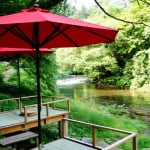
5 Recommended Sightseeing Spots in Kaga City! Enjoy Touring Kaga Onsen Region
-
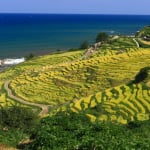
The Many Faces of Shirokome Senmaida’s Charm|Recommended Scenic Spot in Noto (Wajima, Ishikawa)
-
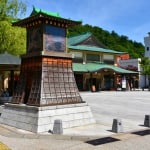
Introducing the four hot spring towns that make up Kaga Onsen-kyo, a popular hot spring area in Ishikawa Prefecture
MOST POPULAR ON Ishikawa
-
 1
1Doha: Must-see Attractions in the Capital of Qatar
-
 2
2Toronto: 10 Things to do in this Picturesque Canadian City
-
 3
3Amarillo: A City Famous for It’s Amazing Canyons, Great History and Music
-
 4
4South Korea: Dazzling Scenery, Rich Culture and Fascinating History
-
 5
5Kuwait: A Country in Middle East Asia Famous for Hot Sand Dunes and Stunning Cityscape



